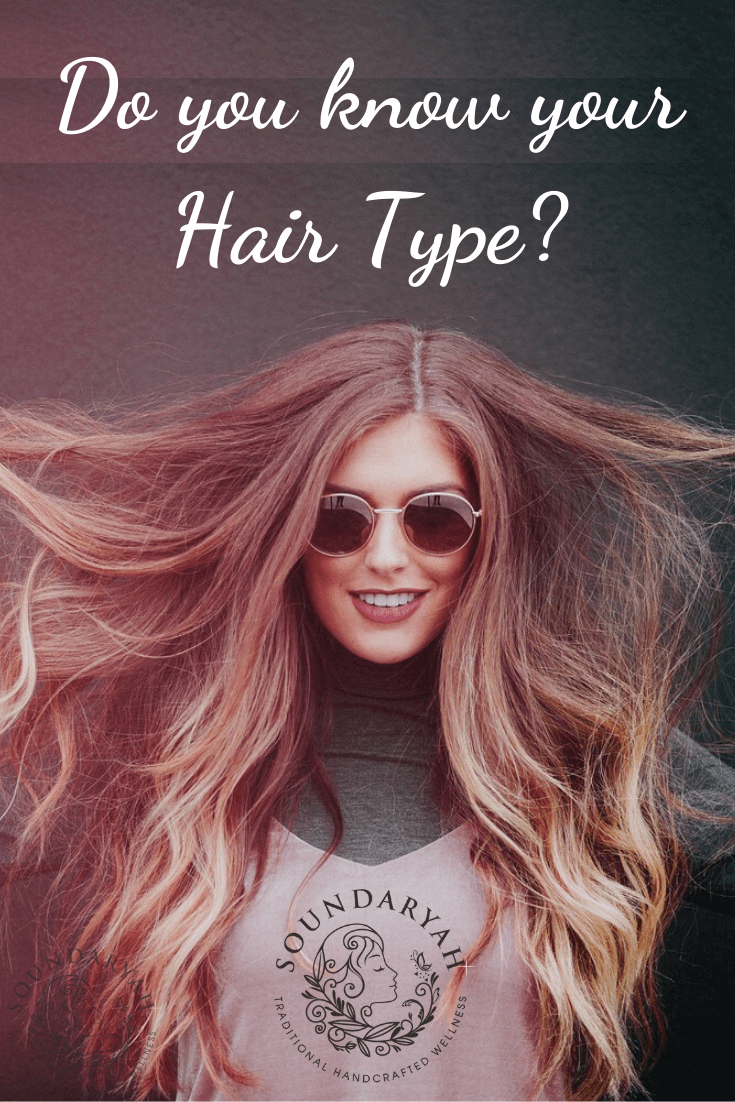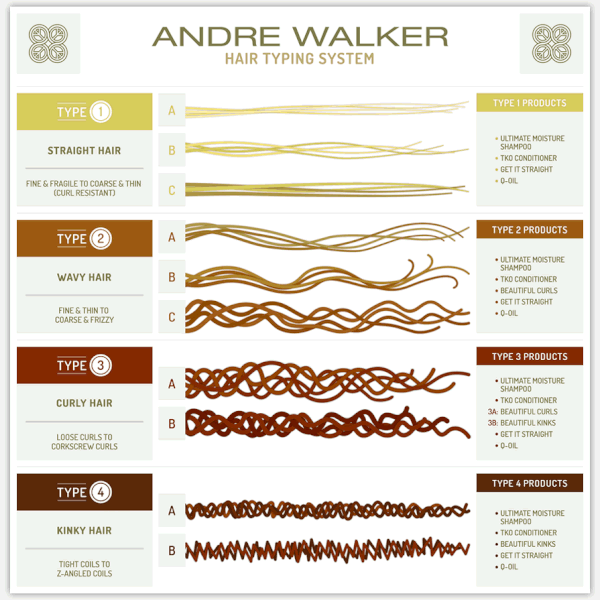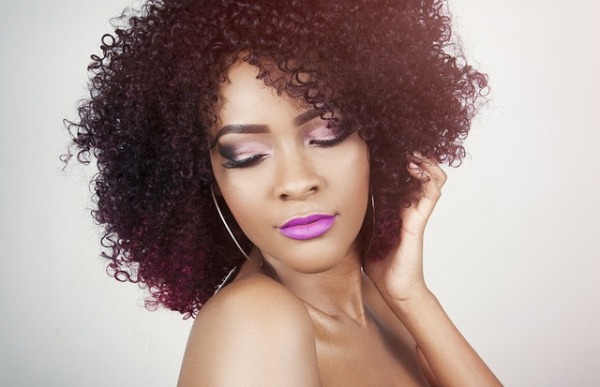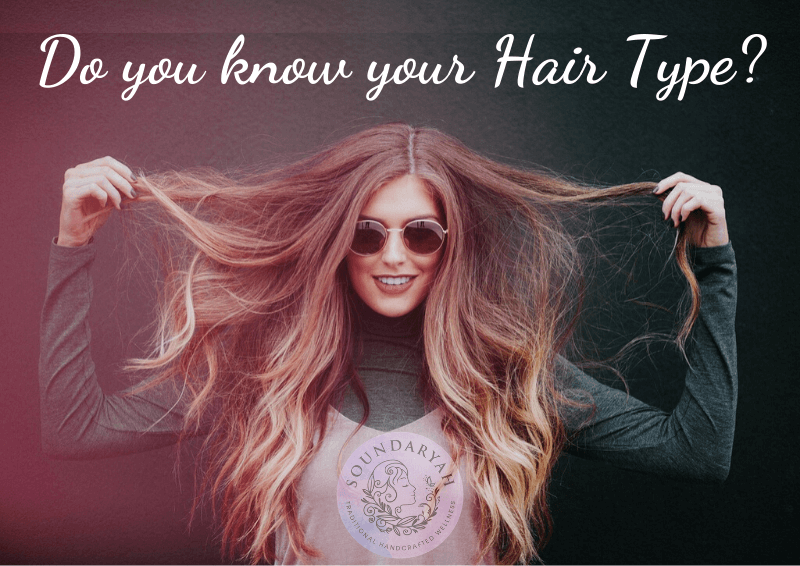Do you know your Hair Type? It’s more important than you think! Knowing your hair type will help you pick the right products and care for your hair better.
You’ve spotted a new hair product on the shelves and have also seen it in advertisements that promise to tackle all your hair woes. You get excited and buy it, only to find that it makes no difference at all, or worse – creates new problems!
You are not alone in this frustration with trying out multiple hair products and facing disappointment after disappointment. But why is this happening to us all the time?
The answer may be quite simple.
It’s because the product you’re using is not suited to your hair type.
Many of us choose a hair product due to the claims it makes, or because of the celebrity promoting it. Very few of us actually take the time to do the research on what the product contains and whether it will work for our hair type.
Wait, Do you know your Hair Type?

Why knowing your hair type is important
Just like you and I are different individuals with different desires, likes and personalities, so is our hair! Your hair’s needs and personality is completely different from what your friend may need, which means a completely different hair care routine and different products.
There are various factors that define a particular hair type. Knowing your hair type properly will also help you understand why you’re facing the issues you have currently, as well as the best way to treat them. It also makes it easier to understand what ingredients will work on your hair type, which helps you make the right choice when it comes to hair products. That’s not all-knowing the hair type and getting the right styling products will also help you find the perfect looks for your mane!
Why are there so many hair types?
Your hair type is determined mainly by your genes. In this aspect, curly hair is a dominant trait, which means it takes priority in case one parent has straight hair and the other has curly hair. The follicle is the living part of the hair in the scalp, and they are formed while we are in our mother’s womb.
The shape of the follicle determines the shape of the hair.
- Circular follicle – Straight hair
- Oval follicle – Straight-wavy
- Elliptical follicle – Curly
Of course, this is a very broad classification of hair types based purely on the shape of the follicle. There are many other factors that affect the type of your hair, such as:
Density – Hair density is based on how much hair you have on your head, or conversely, how much of your scalp is easily visible. This is not the same as the thickness of individual hair strands.
Diameter – Hair diameter is the width of an individual strand of hair or the thickness of individual hair strands.
Porosity – Porosity refers to the hair’s ability to absorb and retain moisture, including the ability to absorb any hair products.
Oiliness – Oiliness refers to the greasy residue on different parts of your scalp, even after washing.
Elasticity – Hair elasticity refers to the extent to which a single hair strand can stretch before returning to its normal state.
Curl Pattern – This determines how curly your hair is – or isn’t. There is a table that classifies the curling of hair that goes beyond just straight, wavy and curly.
With so many factors affecting the type of your hair, it’s obvious that you can’t just have ‘dry hair’ or ‘frizzy hair’. Even saying ‘thick hair’ could refer to either hair density or hair diameter. Let’s look at some ways in which you can easily identify your hair type right from home.
How to know your Hair Type
Start with hair that is shampooed and conditioned with your regular products. Don’t apply any kind of heat or styling products to it – let the hair air dry. Use a good mirror and stand in a place with good lighting. It’s better if you can get someone to help, who can hold a bright flashlight over your head.

To identify your hair density:
Part your hair in the middle, separating it into two sides. Hold a bunch of hair on one side and move it around a little so you can examine the roots and your scalp from different angles. Check how much scalp can be seen in a square inch area.
- If you don’t see much scalp, you have thick hair density.
- If you see some scalp, you have medium hair density.
- If you see a lot of scalp, you have thin hair density, i.e. scanty hair
Repeat the test on a few different areas of your head to get a better idea.
To identify your hair diameter:
Hold a single strand of hair between your fingers. Check how well you can feel the hair.
- If you can feel the hair strand distinctly between your fingers, you have thick hair.
- If you can just about feel the strand, you have medium hair.
- If you can barely feel the hair, so much that it feels invisible, you have thin hair.
To identify your hair porosity:
Pull out a single hair strand, preferably from the crown of your head. Submerge this strand in a bowl of water.
- If the hair sinks to the bottom, you have high hair porosity
- If the strand of hair floats in between, you have normal porosity
- If the strand floats on the surface, you have low porosity.
To identify your hair elasticity:
For this, your hair needs to be wet. Pull out a strand from the crown of your head and try to stretch it as much as you can.
- If the strand stretches a long way without breaking immediately, it indicates high elasticity.
- If your hair stretches to a little before breaking, it indicates medium elasticity
- If your hair snaps almost immediately after stretching, it shows low hair elasticity
To identify your hair’s oiliness:
Make sure your hair is washed and air-dried overnight. On waking up, press a tissue paper against the scalp, near the crown and behind the ears. Check the tissue paper for oil residue.
- If there is a greasy patch on the tissue, you have greasy hair and a greasy scalp.
- If there is an oil residue only on some places like behind the ears, you have combination hair.
- If there is no oil residue on the tissue, you have dry hair.
To identify your hair’s curl pattern:

Hair Curl pattern is broadly classified into 4 types – straight, wavy, curly and coily/kinky. But due to the wide variations in hair, these are further divided into subcategories, and this categorization has been created by Andre Walker.
Type 1 – Straight Hair
This hair type stays straight and flat from root to tip. It’s quite shiny and feels soft and silky.
- 1A: Hair is soft and cannot hold a curl
- 1B: Hair does not curl but has more volume
- 1C: Hair does not curl and is rather coarse
Type 2 – Wavy Hair
This hair type is neither straight nor curly, being somewhere in between. There is usually a small curl towards the hair ends and may feel rough to the touch.
- 2A: Hair is wavy, resembling the letter S, and is coarse
- 2B: Hair is often frizzy with a definite wave
- 2C: Hair is very frizzy with thick waves, and is the coarsest of this category

Type 3 – Curly Hair
Curly hair types usually have an ‘S’ pattern in the hair strands. There are definite curls that bounce back after any straightening. Curly hair may be rougher and prone to frizz.
- 3A: Curls are about the same diameter as sidewalk chalk or pretty loose curls
- 3B: Curls are about the same diameter as a sharpie or medium-sized curls
- 3C: Curls are about the same diameter as a pencil or corkscrew curls
Type 4 – Coily/Kinky Hair
Kinky hair consists of tight curls with strands that resemble a ‘Z’ shape. They may look rough but are usually quite soft and bounce back immediately.
- 4A: Curls are very tight, about the same diameter as a needle
- 4B: Curls resemble a zigzag pattern, looking like the letter Z
- 4C: This hair type has a tight zigzag with an uneven pattern
How to choose products for your hair type
Once you’ve identified your hair type, it’s easier to choose products based on your hair type. Most products have the hair type mentioned on it, and you can read the ingredients and make an informed decision. Here are some basic pointers.
- For medium hair elasticity, you need strengthening products like hair masks and hair oils
- With low elasticity hair type, you need to pay special attention, avoiding harsh chemicals and choosing products to strengthen the hair cuticle.
- With thin hair, thickening hair products help to increase the volume
- Those with oily hair need to wash their hair 4 to 5 times a week. Ingredients like clay help to cut down the greasiness
- For dry hair, use products that have a hydrating or moisturizing effect.
- Those with straight hair better avoid thick conditioners that weigh hair down
- With wavy hair, it’s better to use a smoothening product to reduce frizz. Finger styling works best with wavy hair.
- Deep conditioning is great for 2C hair types.
- For curly hair, it’s best to stay away from heat styling and use a t-shirt or microfiber towel to dry hair
- Cleansing conditioners may be a better option for those with 3C hair types
Also Read : Must-Know List of Toxic Chemicals in Everyday Products in Your Bathroom
So do you know your hair type now !!

Did you find our Do you know your Hair Type blog ? interesting, please let us know in the comments section.


 Verified Purchase
Verified Purchase




![Youthful Glow Herbal Face Wash [100g] - Soundaryah](http://soundaryah.com/cdn/shop/products/1a_b5d64eda-7417-41b9-bad5-b271f4ef68ff_300x.jpg?v=1634899930)
![Royal Herbal Hair Wash [200g] - Soundaryah](http://soundaryah.com/cdn/shop/products/1_300x.jpg?v=1669120964)
![Intensive Body Polishing Ubtan [200g] - Soundaryah](http://soundaryah.com/cdn/shop/products/1a_8728dcb7-c696-447d-b42e-0a56a5326fb6_300x.jpg?v=1634899848)